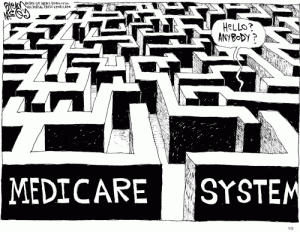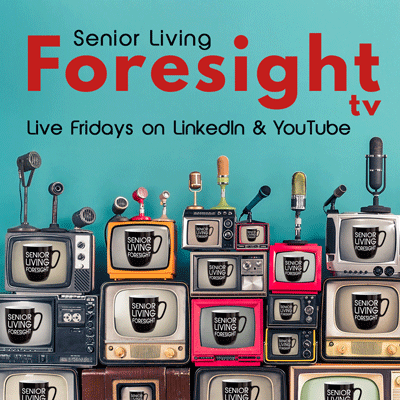By Jack Cumming
Imagine for a moment that:
- You are wealth-qualified to live in senior living, and
- Age limits have been eliminated; you can choose to live there if you wish.
Is that a move that you would consider?
This is what most prospects face in looking at senior living. Few move in primarily to get away from living with young people. The senior living industry has not provided a living experience that even its own leaders and executives embrace. Many of them are already wealth- and age-qualified to move in. Precious few make that move and even fewer when they first qualify.
Moreover, there are hierarchical stratifications separating those executives, their managers, hourly employees, and residents. That’s not intended though executives are often remote in central offices; managers enjoy flexible hours; hourly employees generally punch a clock; and residents often learn of decisions only after they are final. Thus, senior living departs from many of the cultural norms that prevail in other housing options. Can we make our offerings welcoming to all people? Hassle-free living is attractive but not enough to draw those most familiar with the inner workings.
Joyful Living
We’re creating living that can make the world rejoice. Ryan Frederick, the forward-thinking senior living expert, observes that a “physical dwelling” is not a “home.” The world yearns for home. Would you move to a hassle-free “dwelling” where you belong, where you fit in, and where you know you’re home?
Hospitality is not home. A care facility is decidedly not home. Home is a way of life. It’s where you feel safe, accepted, and where “everybody knows your name.” Would you live where you work? You might if it felt like home. Can we create that home to help the world rejoice? We can.
Imagining
Let’s go back to our imagined dream. As you imagine moving in, the first question you face is, “Will we be better off for having made the move than we are staying put?” That may be where you stop as well. First, you will consider cost. Although your wealth qualification means that you can afford it, is it a value worth the price? That may depend on whether the community that attracts you has a lean operation or a large burden of corporate overhead and redundant staff.
If you are now empty nesters living in a single-family house where you raised your children, your response might differ from otherwise. A single-family house can become a lonely dwelling. This is pointedly true if one spouse works alone from home while the partner spouse goes off to a workplace. The idea of moving to a congregate living community, especially one with a co-working space, can then be very attractive, and even more so if you can roll over your home equity into equity in your new home.
What If We Stay Put?
If you are already living in a multi-family community, the attractiveness of what is now senior living (“better living” in our imaginings here) will depend on whether you have equity ownership where you live (cooperative or condominium) and whether the public spaces are conducive to socializing. If you are a renter, moving into what senior living now predominantly offers would require you give up the American Dream of owning your own home.
In short, the initial attractiveness of our imagined “better” living alternative will depend on: (1) ownership; (2) convenience; (3) friendships and neighbors; and (4) communal life beyond those common fitness facilities. If you have been working from home, you might also want your new “home” to have a co-working area onsite. Shifting from home to such a working space can foster an atmosphere conducive to accomplishment.
Better Living
There are clear attractions for people of all ages in our imagined hassle-free living community. That brings us back to the question of whether you will be better off moving than staying put. If you now own your home, you would have to give up the freedom and pride of homeownership to become a tenant in a rental community, though there are many apartments that are attractive.
Despite all the advantages, the prospect of giving up ownership freedom and flexibility can be daunting. Today’s senior living is primarily a “rental” model, though many communities require prepayment of at least part of future rents in the form of entrance fees. As an aside, some states don’t give senior living residents tenant protections since they view the contract as merely granting a “license to occupy.” With the entrance fee model, the idea of selling your home to raise money to prepay rents and to live as a tenant or licensee is not likely a choice you will make, though it’s often what senior living sells.
It could be different if you could own your new apartment or villa. There are a few senior living communities with ownership, and in cities like New York, large apartments are a norm for many families of all ages. The New York experience shows that problems with the condominium model can be avoided with cooperative housing, though condominiums prevail in much of the country. Other Senior Living Foresight articles delve into the advantages of cooperative living.
Old People Stigma
The least of your concerns would probably be fear of living with old people. There are already many mixed-generation communal living complexes, and they function quite well, perhaps even better than do age-delimited communities. There are also many Naturally Occurring Retirement Communities (NORCs) in which the resident population has aged in place, and they have no difficulty finding young people, even young families, to move in as turnover occurs in the natural course.
Residents in today’s senior living give up autonomy and freedom for the security of emergency response and the package of benefits that the provider offers. These benefits need not be tied to rental housing. They can be delivered to those who need them when they need them, where they need them.
Today’s rules may prohibit allowing younger people from living in assisted living among people with physical or mental challenges regardless of age, but that kind of reactive regulation is not constructive. We need to change it. And we can. An industry that can make housing for the affluent eligible for tax exemption can devise positive regulations and can take a proactive stance to get them enacted. It’s been done before by other industries.
Flipping the Question
The flip side of our question “Would you live where you work?” is its reverse, “Would you work where you live?” If you have young children, your answer may depend on what childcare facilities are available. The lack of onsite childcare for senior living workers is one of the great puzzles for an industry that is struggling with staffing. But that’s only part of the answer to this question.
During the pandemic, many thought workers were able to work from home, but most service workers did not experience that convenience. In our imaginary world, however, in which age limitation is not imposed and in which congregate living is affordable, it would be possible for those providing services to live in proximity with those they serve.
Already, some care providers are choosing to live where they work and to work where they live — licensed providers of board and care services from their homes. It’s not for everybody; it’s important to have experience and to understand the complexities. For those who can make the leap into self-employment, it allows you to provide a homelike setting for those needing care; to provide a higher level of care service than a typical “facility”; to live where you work; and to be free of corporate hierarchy. Imagine housing college students and very old people in your large home under your guidance.
The antidote to ageism is not changing language but changing lives. Mixed-generation, age-friendly communities are the catalyst. Architects call it universal design, meaning buildings in which people of all ages and capabilities can live together. AARP has borrowed the idea of “age-friendly cities” from the World Health Organization and is consistent with universal design. Senior living has the ability and the expertise to change from age-delimited living to Better Living for all. Let’s open the joys that we promise seniors to people of all ages and create naturally welcoming communities in the process.
Happy living is something we all yearn for. We have the tools to give people the kind of living that makes the world rejoice. Let’s make it happen.








